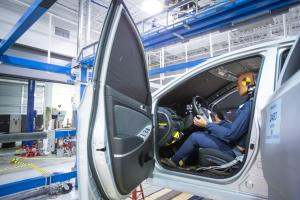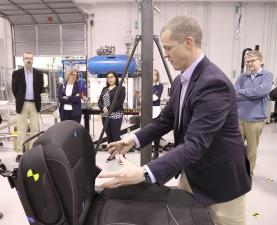Jason Forman

About
Jason Forman's research topics include the development and biofidelity evaluation of anthropomorphic test devices, the execution of full-scale impact biomechanics experiments with dummies and other models in simulated automobile collision environments, the development of injury risk functions for use with dummies and computational models, field data analysis for injury risk factor evaluation, and investigating the effects of factors such as aging and obesity on injury risk. He has twenty years of experience in injury biomechanics research spanning topics from dummy and injury risk function development to the micro-mechanical behavior of biological tissues. After completing his graduate work at the University of Virginia Center for Applied Biomechanics, Dr. Forman served for two years as the Deputy Director for Science at the European Center for Injury Prevention (Pamplona, Spain). Upon returning to UVA, Dr. Forman continued in experimental biomechanics research as a Senior Scientist, Principal Scientist and then Research Associate Professor. Jason's other interests include hiking, outdoor sports, travel, and food.
Education
Doctor of Philosophy (PhD) – University of Virginia Department of Mechanical and Aerospace Engineering
Bachelor of Science (BS) – University of Virginia Department of Mechanical and Aerospace Engineering

